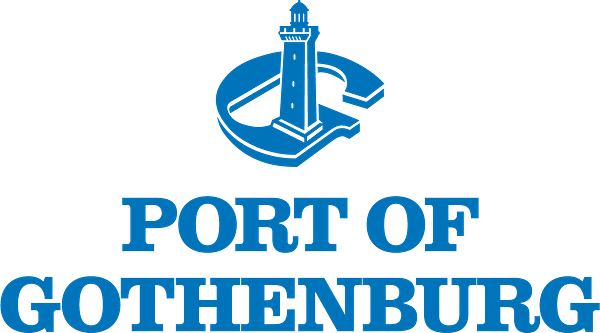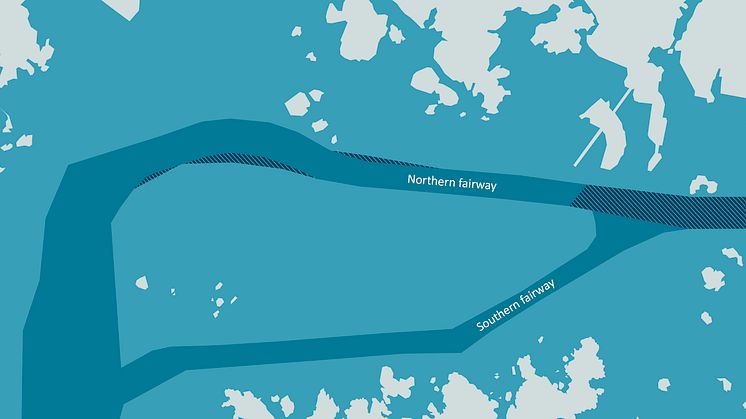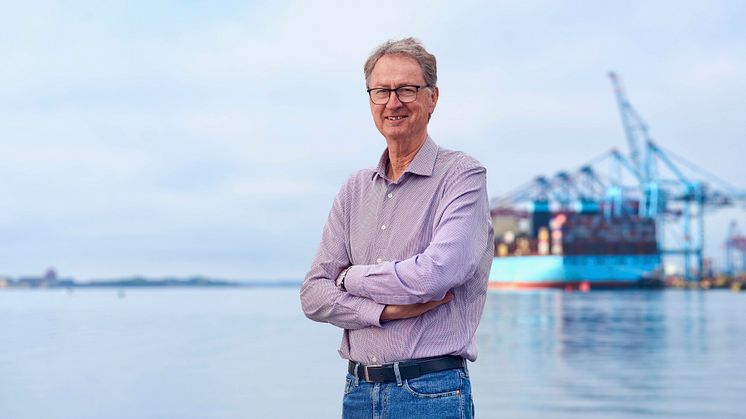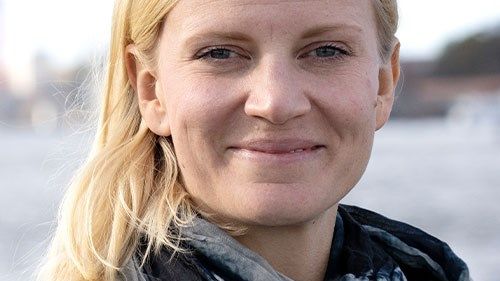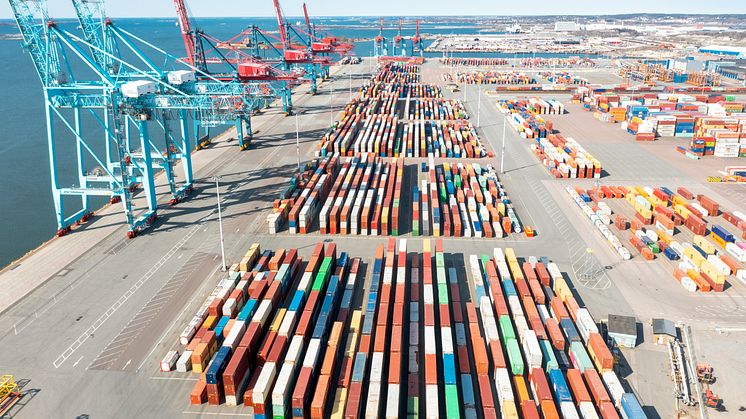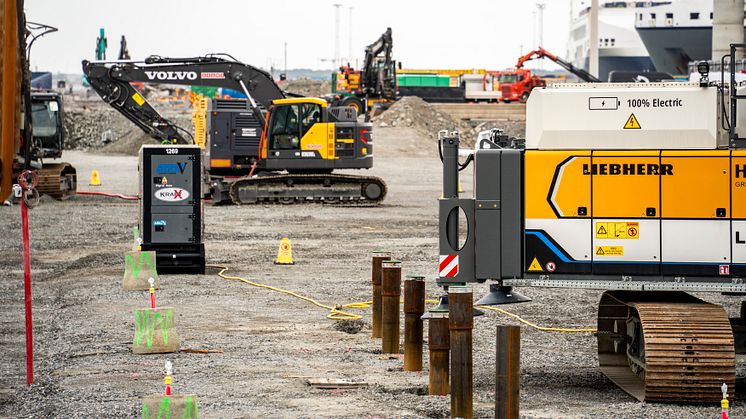
Press release -
Active choices in the Port of Gothenburg fairway deepening project reduce carbon footprint by 10,000 tons of CO2e
In April, the Skandia Gateway fairway deepening project celebrates one year since construction began at the Port of Gothenburg. While progress is continuing according to plan, efforts are also being made to meet the project's climate ambitions. This requires both creativity and tough priorities.
In the Port of Gothenburg, one of the largest infrastructure projects in the port's 400-year history is currently underway, which is also one of the largest dredging projects that the Swedish Maritime Administration has undertaken in over 20 years. It involves an extensive fairway deepening where a 5-kilometer section of the fairway will be deepened from the current 13.5 meters to a maximum of 17.5 meters.
However, to accommodate the increased depth, the quay at the Port of Gothenburg container terminal needs to be significantly reinforced. The quay reinforcement is an extensive project, with the ambition of reducing the climate impact by at least 30% compared to the initial climate calculation made during the design phase. In absolute terms, this means a reduction from approximately 31,000 to around 21,000 tons of CO2e (carbon dioxide equivalents).
"To meet this ambition, we must first and foremost be ready to prioritize it highly in every decision we make, from material choices to transportation and construction techniques. It also requires us to be creative and look for reduction opportunities beyond what is conventional," says Jan Andersson, project manager for Skandia Gateway at the Port of Gothenburg.
According to Jan Andersson, the fundamental approach is to consider three aspects in every step: buildability, economy, and climate impact:
"If it is technically possible and reasonably economically justifiable to use a different construction technique or make a more sustainable material choice—then we do it. And our threshold for what is economically justifiable is quite high."
Creativity and Circularity
Among other things, this means being willing to pay extra for environmentally friendly alternatives to materials like concrete and steel. Green materials generally cost more, but with creativity and circular thinking, exceptions to the rule can be found. One example where extra thought was given to both technique and material choices concerns the 1,500 piles that are driven through the quay, into the seabed to stabilize the new quay.
"The conventional method is to fill the pipes with concrete all the way down to prevent rusting. But is that really necessary? We concluded that, in our specific conditions, it is sufficient to reuse gravel from the project as fill material," says Jan Andersson.
The project's climate impact is monitored three times a year throughout the project, which is expected to be completed in early 2028. So far, CO2e emissions have been reduced by 28%, and this figure is likely to increase to over 30% by the end of the project.
"But we need to continue being very careful, creative, and consistent in our priorities," says Jan Andersson.
Incentive model rewards
The dredging part of the Skandia Gateway project will begin in Q3 2026. In the ongoing procurement of the dredging contract, the Swedish Maritime Administration has developed a clearer and stricter environmental requirements framework compared to previous practices.
"We are setting climate requirements for fuel used in construction machinery and land transportation, and we will continuously collect information on fuel consumption and CO2e emissions to refine the requirements further in the future. In addition, we have developed an incentive model that rewards the contractor for initiatives beyond the basic requirements that can lead to reduced environmental impact," says Jenny Röström Wicander, project manager for Skandia Gateway at the Swedish Maritime Administration.
Fact file: How carbon emissions are reduced in Skandia Gateway's ongoing quay reinforcements
- The project includes a circular approach. For instance, steel beams from an E45 motorway expansion are reused in the quay reinforcement work.
- Leftover steel rods from the Västlänken project are used to secure ("nail") sheet piling in rock under water.
- High climate performance requirements are set for material purchases through Environmental Product Declarations (EPDs).
- The sheet piling is made from recycled steel and transported by train (removing space between) from Luxembourg all the way to the project site.
- Part of the cement used is replaced with granulated blast furnace slag.
- Old, removed asphalt is reused to make new asphalt.
- Electric power is used for all cars and buses in the project.
- All construction machinery used in the project runs on electricity or HVO100 (renewable fuel).
Read more and follow the development of the Skandia Gateway project here.
Topics
Fact file: Port of Gothenburg
The Port of Gothenburg is the largest port in Scandinavia. Around 20% of Swedish foreign trade and over 50% of all container traffic is handled in the Port of Gothenburg . The port is a full-service port, and offers industry guaranteed, climate-smart access to the whole world. Direct services to key markets ensure highly efficient, sustainable, and reliable transport 24 hours a day, 365 days a year. The focus is firmly on sustainability, innovation, and digitalisation in a concerted effort to maintain the ongoing development of climate-efficient freight transport and calls by vessels. With over 30 rail shuttles offering daily departures, companies throughout Sweden and Norway have a direct, climate-neutral service to the Port of Gothenburg. The port handles energy products, vehicles, ro-ro units, containers and passengers.
Follow us on:
Facebook
Instagram
LinkedIn
Twitter
www.portofgothenburg.com
